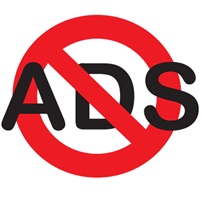
Ad blocking and avoidance have their most immediate effects on publishers that miss out on ad revenues they would otherwise have received from serving content to ad blocking users. Ad avoidance is just one of the reasons the average non-walled-garden publisher is struggling with ad-based monetization, and alternative revenue strategies have been gaining importance in recent years.
For our latest report, “Consumer Attitudes on Marketing 2019,” we examined how publishers are being affected by continued growth.
Display ads are still the most important digital revenue stream for news publishers worldwide this year, according to polling by the Reuters Institute for the Study of Journalism at the University of Oxford. But subscriptions were a close second. Almost half of respondents indicated events were an importance source of revenues, and 31% pointed to ecommerce.
None of these revenue streams are new, and previous editions of this report have noted publisher work on all of them. Big-name publisher brands like The New York Times, The Washington Post and The Wall Street Journal now boast significant subscription revenue streams. Ecommerce-related revenues could include a variety of tactics—such as affiliate links, which publishers are finding some success with, according to reporting in outlets such as Digiday, Nieman Lab and Forbes.
Some publishers are also looking to become ad networks or technology vendors of their own, including Vox Media with its Chorus and Concert products and The Washington Post with its publishing platform Arc.
“There’s going to be a lot of different branching out in terms of looking into other revenue streams,” said Zack Dugow, founder and CEO at publisher monetization partner Insticator. “Certainly the tier one publishers with really strong brands will be able to do that successfully, for example by creating more of an events business, or creating more of a subscription business.
“But it’s really difficult for smaller publishers or mid-tier publishers to get people to subscribe to their content and have that become useful revenue for them,” he said.
Subscriptions aren’t a complete solution on the consumer side, either. We have followed the issue of subscription fatigue and whether there’s a limit to the number of different sources of content people will pay for. Many publishers, including video platform Dailymotion, recognize there will be major consumer demand for free, ad-supported services as well as experiences with no or fewer ads.
“You’re going to start to see higher-quality publishers offer free streaming and accessible content, and make it ad-supported,” said Claudia Page, senior vice president of product and partner development at Dailymotion. “Especially if the ads and the ad formats are contextually relevant to the content, un-intrusive, and you’re not serving three or two in-stream ads just for a 45-minute clip. You’re going to start seeing a lot more from quality publishers trying to diversify the way that they not only reach an audience, but then monetize it.”
“Consumers will accept advertising if it fits their interest and it’s good,” said Todd Loofbourrow, CEO and chairman of video ad tech provider ViralGains. “The consumption of video advertising is at an all-time high despite ad blocking and skip buttons. If the ads are good and they fit what someone’s interested in, there is appetite for free services supported by ads. In fact, the appetite is much larger for that kind of service than it is for premium ones.”
So there’s still important work publishers, advertisers and their partners must do to ensure the advertising experience is good, involving better creative and formats and different ways of targeting and creating relevance. And new infrastructures may be needed to accomplish that.
